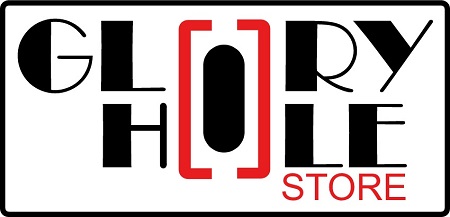Content
Another example is Shopify Balance, which allows Shopify store owners to ‘skip the bank’ by getting paid faster and eliminating the need to open a separate business bank account. It also offers a debit card with exclusive rewards for purchases made towards growing a Shopify business. Embedded finance use has picked up in recent years, and is expected to exponentially rise. It’s estimated that embedded financial services will produce $230B in revenues in 2025—a 10-fold increase over the $22.5B in revenues in 2020. One of the most notable examples of digitization is in the fintech sector, particularly how traditional businesses engage finance on a new level by integrating financial mechanisms into their overall business plan. The era of embedded finance is taking hold, and with an estimated market value of over $138 billion in 2026, it’s clear that it’s not just a financial fad, it’s the future.
- Within embedded PoS lending, enablers and platforms should be able to increase their profits, despite shrinking margins.
- When consumers tap “confirm” on a rideshare app, they are usually too busy scanning the road ahead to consider the technical acrobatics occurring in the blink of an eye.
- Dmitry Dolgorukov is the Co-Founder and CRO ofHES Fintech, a leader in providing financial institutions with intelligent lending platforms.
- Embedded finance currently focuses on the digitisation of models that are already prevalent in the real world.
- Platforms often cross-subsidize their offerings, reducing costs for customers.
- In its most basic form, Embedded Investment allows platforms to integrate stock market investing into their vertical offerings.
By removing consumer pain points, such as the need to seek credit elsewhere, customers may be more likely to complete a purchase and experience customer satisfaction, which is essential in achieving brand loyalty. For businesses, this can lead to the opportunity to make an increased profit as consumers are more likely to purchase an item or service and return to do so again and again. Winners are already emerging in the race to provide banking and payments infrastructure for embedded finance, but incumbents and new entrants still have time to claim a share of this dynamic market. The goal of Shopify’s banking feature is to encourage small business owners to set up a separate bank account for their company, rather than use their personal checking and savings accounts. One example of a company that uses cards to streamline payments is PayPal. Users have the option of linking their PayPal account to their bank account.
A $51 billion market opportunity
It offers an insurance program that lets people purchase the appropriate amount of coverage nearly instantly. Insurance available directly from Tesla also tends to cost less than a policy from a third-party insurance provider. This a list of Embedded Finance platforms that integrate with Landlord Studio. Use the filters on the left to add additional filters for products that have integrations with Landlord Studio. View the products that work with Landlord Studio in the table below.
It enables customers to access financial services within the app and in-context. For example, customers can make cashless payments within a ride-hailing app. Embedded Finance enables businesses in the MSME, B2C, and B2B segments to increase their customer lifetime value, monetize their https://globalcloudteam.com/ customer base, and vertically scale their product offering. It’s a potentially 7+ trillion dollar market and has been called the fourth platform by Bain capital. The most common embedded finance offerings include banking, lending, insurance, payments, and branded credit cards.
Intuitive APIs, low-code modules, clear documentation, and outstanding support. Pay down or payoff, we make it easy to create a payment and apply it correctly. Stripe is the best software platform for running an internet business. We handle billions of dollars every year for forward-thinking businesses around the world. Stripe builds the most powerful and flexible tools for internet commerce. Millions of the world’s most innovative technology companies are scaling faster and more efficiently by building their businesses on Stripe.

This involves analyzing your digital needs and deciding which tools you want to embed. The first step of that is to identify your company’s goals for its embedded finance project. These could be things like improving customer service, growing an existing customer base or launching a new venture to meet a specific target audience or a specific need.
Embedded finance enables every company to be a fintech company—and is creating a massive economic opportunity
Among embedded-finance distributors and their end customers, demand is already maturing for a range of deposit, payment, issuing, and lending products . In addition to these traditional financial products, novel use cases are emerging. For example, embedded-finance distributors are offering prepaid cards to employees as part of earned-wage access programs; giving merchants the option to use their deposit accounts for instant-payments settlement.
In the future, only unprofitable or higher-risk consumers may default to traditional channels. Regardless of how banks grade loans, they won’t see the valuable lending opportunities. Put simply, embedded finance is the placing of a financial product in a nonfinancial customer experience, journey, or platform. For decades, nonbanks have offered financial services via private-label credit cards at retail chains, supermarkets, and airlines.
BNPL enables MSMEs to purchase on credit and repay later as per their preference. This empowers them to grow their business and manage working capital gaps, while also boosting the digital platform’s AOV and CLTV. Read more about How Buy-Now, Pay-Later will revolutionize B2B E-Commerce. Embedded Credit is the seamless integration of Lending-as-a-Feature into digital platforms.

We are building a workplace culture of psychological safety, high-performace and a responsibility towards wider society and the environment around us. By 2026, platform revenue will more than double to $14 billion, with take rates remaining largely flat. Meanwhile, enabler revenue will rise only slightly to $7 billion, with a significant drop in pricing and take rates, from an average of 38 to about 20 basis points, due to increased competition.
Therefore, it’s quickly become a baseline service that users expect. Through embedded finance, transactions can occur almost instantaneously, allowing users to access products or services quicker than ever before. Where consumers once needed to receive credit or a loan from their bank before making a large purchase, embedded finance consolidates the process for faster transactions.
What is embedded finance? 4 ways it will change fintech
This will flow from faster penetration of embedded payments among industries including retail and food services, where it will nearly double to capture 70% of SMB transaction volume. We might also see new vertical categories emerge as digital payments become more prevalent. Consumer payments account for more than 60% of all embedded finance transactions. In 2021, US customers spent $1.7 trillion via embedded payments, generating $12 billion in net revenue, based on an aggregate take rate of around 75 basis points .
Non-FinTech companies / businesses that own a customer-facing digital platform such as a mobile app, a website, or a desktop application. With their deep understanding of target audience segments, they can offer customized financial solutions to customers, ’embedded’ within their platform. Embedded Insurance refers to the bundling of insurance within the purchase of a product or service. For example, Tesla offers auto insurance at the online point-of-sale and also as part of in-showroom purchases. Embedded Insurance companies offer transactional APIs and technologies that allow insurance solutions to integrate with mobile apps, websites, and other partner ecosystems.
Banking
The space will continue to be well funded as more use cases expand the addressable market. Should that happen, enablers will continue to play an important part in helping platforms navigate complex regulatory, financial, and technological requirements. Even if they do not build it themselves, the specialist knowledge of fintech experts and engineers will be crucial to platforms’ ongoing success. Enablers will need to manage their operating costs in a bid to secure desirable platforms. As enablers jostle for business, that further strengthens the platforms’ position. The exceptions here are large enablers that use their size to command a significant share of the economic rents.
Finastra teams with Jifiti to deliver embedded finance – The Paypers
Finastra teams with Jifiti to deliver embedded finance.
Posted: Mon, 07 Nov 2022 08:06:00 GMT [source]
“Buy now, pay later” may be one of the most visible and common forms of embedded finance seen by online shoppers. It appears during the online checkout process, at the moment consumers are contemplating their available funds. These offerings typically provide monthly or weekly payment installments over a predetermined period with no interest. Popular companies offering buy now, pay later solutions include Klarna, Affirm, and Afterpay. Before embedded finance, a consumer needing to borrow money for a large purchase either had to use their credit card or take out a traditional loan from a financial institution—both of which carry high-interest rates. Embedded finance has changed that by enabling companies to offer more favorable loan options at the point of sale.
Embedded finance is a growing, multi-trillion dollar market
However, fintech has expanded the ability of companies to offer branded credit cards and increased the use cases where it makes sense. Embedded finance changes when, where, and how people interact with financial services—and creates substantial opportunities for both financial and non-financial companies. 88% percent of companies that implement embedded finance report increased engagement, and 85% say that it helps them acquire new customers. In my experience, one of the primary benefits of embedded finance is its ease of use for consumers.
Those using direct channels will need to build a new set of capabilities to support distributors in selling embedded-finance products to their consumer or business customers. A few banks and fintechs, including Cross River Bank and Banking Circle, fulfill both of these functions. An embedded card payment allows companies to send compensation through their branded credit cards. Employees can use their company card for purchases, and their company will cover some or all of the interchange fees. Examples of programs that feature embedded payments include ride-sharing apps likeUberorLyft.
What is embedded finance?
It connects regulated firms with brands looking to embed wealth and other banking services into their offering. Like all new concepts, for those just becoming acquainted with the idea, it can be challenging to get a grip on what this term means. Simply put, embedded finance is the use of financial tools or services — such as lending or payment processing — by a non-financial provider. For example, an electrical shop could offer point-of-service insurance for goods sold in-store.
A fair share of what banks need they probably already have, so externalizing these services can become part of the first-draft architecture. Point-of-sale lending has existed as a credit option for consumers for many years. An alternative to BNPL, it’s often used for more expensive goods, such as furniture and large appliances, and includes interest, Best Upcoming Embedded Payment Trends usually across 6- or 12-month terms—the fundamental difference between PoS lending and BNPL. However, as with BNPL, the value to the merchant comes through increased sales conversion and larger basket size. Platforms don’t generate revenue through interest and generally pay a certain percentage fee to enablers such as Affirm to operate.
Frequently asked questions about Embedded Finance
By 2026, the nonfinancial services market penetration for debit cards will increase potentially fivefold to around 15%, while we see the start of credit card SaaS models adapted for embedded finance. There are several methods to embed finance and banking programs into non-financial products and services. The first one is investing in an additional offering into the brand’s digital platform. This can include offering lending services or creating embedded bank accounts for businesses.
Ultimately, Embedded Credit produces better margins on FinTech products and new go-to-market options. Partnering with digital platforms allows financial institutions to leverage their vast amounts of consumer data. Banks can use this data to acquire new customers, understand existing ones better, tailor financial products accordingly, and drive repeat transactions. Embedded Finance, also known as embedded banking, is the seamless integration of financial services into a traditionally non-financial service.
